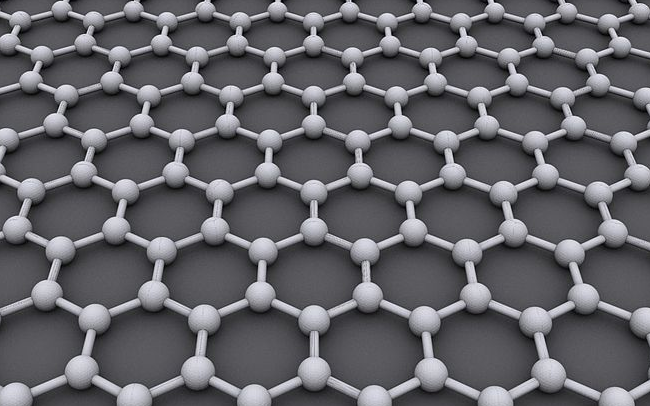Their Nobel for Graphene Today, Your Products Tomorrow
by Ann Finkbeiner

This picture is not chicken wire or a tesselation or a patchwork quilt or a cross-section of a honeycomb-amazing how many things are linked hexagons-but a material called graphene, which is just plain old pencil-lead graphite sliced thin, sliced as thin as you could imagine thin could be. It’s thin enough that electricity flows through it effortlessly. It’s thin enough to see through. It’s one atom thin. Those atoms are carbon and their little arms hold tight and so in spite of being thin, it’s also flexible and strong. Its possible applications are making the technoratiat fall all over itself with joy and lust. It just won its discoverers, Andre Geim and Konstantin Novoselov, the physics Nobel Prize.
Geim and Novoselov, at the University of Manchester in the UK, made the first sample of graphene-that wasn’t made by everybody else writing with a pencil on paper-by peeling a layer of it off a chunk of graphite with Scotch tape. Graphite is a three-dimensional honeycomb; a one-millimeter chunk of graphite is actually a stack of three million layers of graphene. The layers peel off easily; all the strength is in the flat layer, in two dimensions. You can roll a layer into a nanotube; you can wad a layer into a buckyball. Graphene’s strength, plus its transparency, flexibility and ability to conduct electricity, are ideal for making transistors, touch screens, sensors and roll-up computer monitors which, being thin as paper, could-I make a wild surmise-be bound into books.
Geim and Novoselov are young, 51 and 36 respectively, giving them plenty of time to develop the Nobel effect and become so famous they stop doing research and spend the rest of their lives giving talks and having opinions. Geim says he won’t: “I’ll just try to muddle on as before.” Ten years ago, he won another prize, called the Ig Nobel, for magnetically levitating a frog.
This Nobel for physics, like most of them lately, is in a field called condensed matter, formerly called solid state, which is famous for having applications, attracting money and being completely incomprehensible. It bores me to pieces, I really can’t abide it, but something about reducing reality to two dimensions makes my inner philosopher want to jump around all over the place.
Ann Finkbeiner is a proprietor of The Last Word on Nothing, and is newly the author of A Grand and Bold Thing: An Extraordinary New Map of the Universe Ushering In A New Era of Discovery. She runs the graduate program in science writing at Johns Hopkins in The Writing Seminars.
